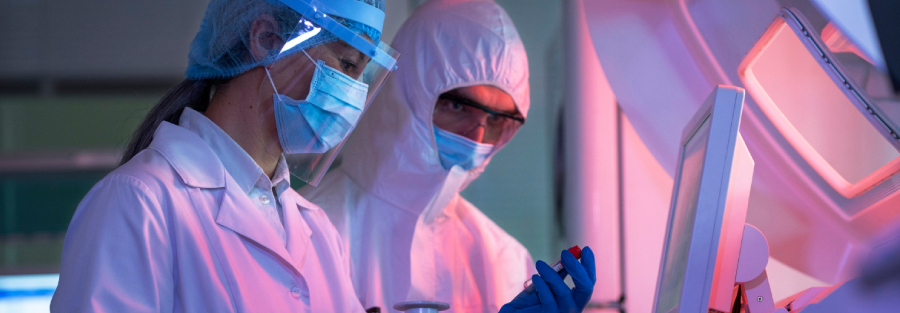
Drug Formulation
What Is Chemical Synthesis?
Chemical synthesis is the process of producing pharmaceutical compounds through controlled chemical reactions, often involving multiple synthetic steps. This method is used extensively to create small molecule drugs that are chemically stable, well-defined, and easier to replicate.
A chemical synthesis company typically focuses on processes involving inorganic or organic chemistry to produce active pharmaceutical ingredients (APIs). These are often used for generics, over-the-counter medicines, and well-established therapeutic areas.
Pros of Chemical Synthesis
- Low Cost: Economical due to well-optimized industrial processes and raw material availability.
- Scalable: Easy to scale from lab to commercial batches using established protocols.
- Stable & Easy to Store: Chemically synthesized drugs tend to be stable under a variety of conditions, making storage and transport simpler.
However, this method may lead to:
- Impurities: Chemical by-products may need extensive purification.
- Environmental Impact: Use of solvents and reagents can lead to ecological concerns if not managed properly.
What Is Biological Synthesis?
Biological synthesis involves using living organisms-like bacteria, yeast, or mammalian cells-or their components such as enzymes to create complex drugs. These are commonly referred to as biologics and include monoclonal antibodies, vaccines, and gene therapies.
This form of synthesis relies on biotechnology and molecular biology, often requiring intricate fermentation and cell culture techniques.
Pros of Biological Synthesis
- Complex Therapies: Enables creation of highly specific and personalized medicines.
- Targeted Action: Biologics can mimic human molecules, offering better target interaction.
- Reduced Side Effects: Many biologics have higher safety profiles due to their specificity.
Cons of Biological Synthesis
- High Cost: Requires advanced infrastructure and stringent regulatory compliance.
- Challenging Scale-Up: Biological systems can be unpredictable, making consistent scale-up difficult.
- Storage Sensitivity: Many biologics need cold-chain logistics and have shorter shelf lives.
Chemical vs Biological Synthesis
| Factor |
Chemical Synthesis |
Biological Synthesis |
| Drug Type |
Small molecule drugs |
Large, complex biologics |
| Cost |
Lower |
Higher |
| Production Speed |
Faster |
Slower |
| Storage |
Stable |
Sensitive |
| Personalization |
Limited |
High |
| Examples |
Ibuprofen, Paracetamol |
Insulin, Monoclonal Antibodies |
Understanding chemical-biological synthesis differences is crucial for choosing the right drug development pathway.
Bioavailability
Bioavailability refers to how efficiently and quickly a drug reaches the bloodstream.
- Chemically synthesized drugs often have well-known absorption and metabolic patterns.
- Biological drugs, due to their size and structure, are usually injected and may have targeted delivery mechanisms.
While chemical synthesis often allows oral formulations, biologics demand more sophisticated delivery systems.
Bioequivalence & Biosimilars
Bioequivalence is central to generic drugs, ensuring the same therapeutic effect as the original brand. These are common with chemically synthesized drugs.
Biosimilars, on the other hand, are biologic products similar-but not identical-to an approved reference biologic. Regulatory bodies like the FDA and EMA assess:
- Molecular similarity
- Clinical effectiveness
- Manufacturing process robustness
Due to the nature of biological systems, achieving exact replicas is nearly impossible, making biosimilar approval more complex than generic drugs.
Impact on CDMO
The synthesis method-chemical or biological-directly influences CDMO (Contract Development and Manufacturing Organization) selection. For chemical-biological synthesis, CDMOs must have:
- Specific expertise in either synthetic chemistry or bioprocessing
- Facility infrastructure aligned to support each method
- Regulatory readiness depending on the target market
For instance, a chemical synthesis company must maintain reactor systems, analytical equipment, and GMP compliance tailored for small molecules.
Biologics-focused CDMOs need clean rooms, sterile environments, and high-end bioreactors.
Key CDMO Questions
Before partnering with a CDMO, ask:
- Do you have experience with my synthesis pathway (chemical or biological)?
- What regulatory approvals do your facilities hold (USFDA, EMA, etc.)?
- Can you manage both development and scale-up?
- Do you offer support for tech transfer and filing (DMFs, CTDs)?
- What’s your track record with similar products?
Choosing the right CDMO ensures efficient development, compliance, and market success.
Conclusion
Both chemical and biological synthesis play critical roles in modern pharmaceutical development. While chemical synthesis is cost-effective and ideal for small molecules, biological synthesis offers cutting-edge, targeted therapies for complex conditions.
Understanding the differences in chemical-biological synthesis helps stakeholders-manufacturers, CDMOs, and healthcare providers-choose the right path for each drug product.
The right decision begins with informed evaluation. Whether you're working with a biotech firm or a chemical synthesis company, aligning synthesis methods with business goals ensures success in the competitive world of pharmaceuticals.






